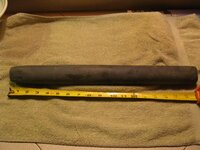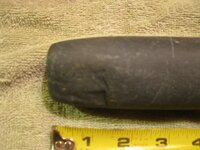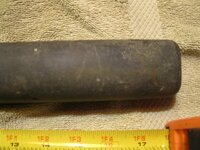lovinlife
Jr. Member
So I'm strolling along this stream and look down to find this stone cylinder looking thing? Not sure if it's a core sample, although I'm out in the middle of nowhere just fields and woods. it's smooth with some slight indentions maybe from the stream maybe from being held idk. What do you pro's think? It's 18 inches long and weighs like 7lbs. Both ends are somewhat rounded off and oval in shape, 1"1/4 and the other is 1"1/2 not sharp at all? Let me know what you think? Could it be a Native American tool?
Attachments
Upvote
3








